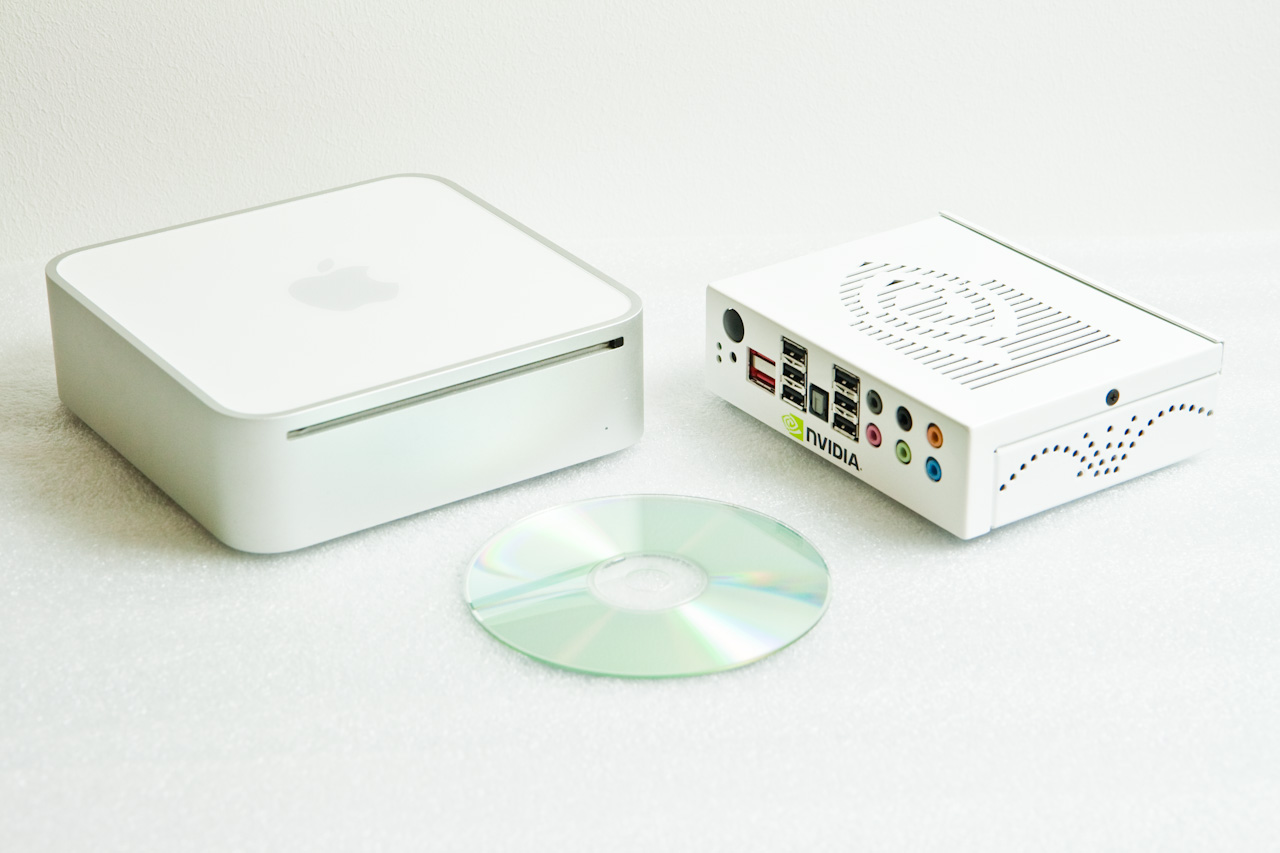Nvidia's Ion: Lending Atom Some Wings
ConclusIon
”Winning” would be a good word to describe how we feel about the Ion platform Nvidia has put together. They’ve come up with the ideal complement to the Intel Atom processor—putting the two together results in a system that’s extremely compact, very affordable, and impressively flexible. In the space taken up by a carton of cigarettes, they’ve put a complete PC (except for the external power brick) capable of handling the vast majority of the tasks we want today’s computers to perform. This includes Web browsing and office applications, of course, but also occasional games—even recent, demanding titles—and even HD video playback.
From this point of view, Ion is not very far from being the ideal home theater PC—one that can finally find a home in most living rooms without being an eyesore because of its size, and without being a nuisance because of its noise level. And remember, our judgment is based on a reference platform, with all the rough edges still on it, and with no particular visual-design effort behind it. You can easily imagine what an inspired manufacturer could do with these basic components. Indeed, the rumors we’ve heard that Apple may be planning to use Ion as the foundation of the next Mac minis or Apple TVs are very interesting. Let’s hope that many other manufacturers are thinking along those lines, and that they will launch innovative products too.
Let’s hope. Because Ion’s future is not as rosy as we may have made it sound. That’s not because of any technological shortcomings, but rather because of the position Nvidia is in, where Intel is concerned. By launching Ion, Nvidia has just stirred up the tranquil waters of the placid pond Intel has planned for itself this year. The netbook wave in 2008 was really more of a tidal wave, and it filled Intel’s pockets, since they were the exclusive supplier of the components. Even during an economic crisis, 2009 is looking like another good year for netbooks and nettops, and Intel won’t want to let anyone else have a piece of this very large pie.
According to certain persistent rumors—which Intel is denying—Intel is trying to put a lock on the market by refusing to sell Atom processors independently of its 945GC (or GSE) chipsets (Ed.: although, to be fair, Intel insisted to us at CES that it'd absolutely sell Atom by itself). So, for each Ion computer built, the manufacturers would have to pay for an Intel chipset they wouldn’t use. That additional expense might be enough to dissuade manufacturers from getting on the Ion bandwagon, especially in the netbook market, where every dollar counts.
And that’s not all. Intel also plans to renew its basic Atom platform, dumping the weak 945 chipset and replacing it with the GN40, derived from the G45. With its 45 nm fabrication process and resulting low power consumption, HD video decoding capabilities, better 3D performance and more, this new platform could pull the rug out from under the Ion platform.
Well, it’s time for us to put away our crystal ball. Only the future will tell whether the Ion will be the Atom’s best friend.
Get Tom's Hardware's best news and in-depth reviews, straight to your inbox.
